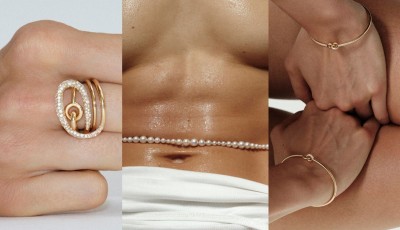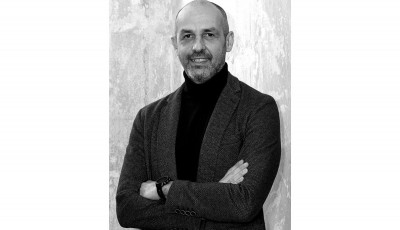Meet The Buyer: Jaleh Farhadpour
Jewels are at the peak of the pyramid of wearable art. Here she explains how to choose, and sell, her fine jewelry of today
Back in the 18th century, Jaleh’s Persian family owned two of the largest diamonds on Earth. With this Heritage and together with her architectural background, she founded Archives in 2014, carrying independent high-end jewelry designers in Canada, in addition to her own jewelry collection. Here the complete interview to understand how and why this ancient trade is changing.
How has the buyer's job changed in recent years? What are the factors that have most influenced your job? Some examples of personal, direct experiences. Buyers are no longer the insiders of fashion world, with the pre-knowlage of what is coming next, but rather, today, they are more the followers of what social media dictates to be the trend. Before the social media revolution and the influence of “Digital Goddesses,” buyers were the ones who would introduce newness and excitement. Today, however, buyers must “click” every second to observe who wears what. We at archives, however, do not follow this “clicking trend.” We are, in a way, still old-fashioned, in as much as we bring what we think will not be lost in time, but rather, willl be the trend of future and worth bringing to Archives. And more often than not, thankfully, we are right. We are always trying to be ahead of the game. Every day we see clients come to the store and ask for something that we actually introduced seasons before.
How do you select the jewelry brands for your boutique? Only exceptional jewelry with artistic value will make it to our portfolio: obviously, no copies or counterfeits, no mass-produced items from far-away places, only authentic designer pieces. We sell design. We sell art. We do not sell trends, but quite often, what we sell, later becomes the trend.
What is the price range and the main characteristics of your jewelry selection? Prices vary: we do not discriminate by price. For us, luxury does not equal expensive. All the pieces that we select are pieces of luxury art. To me, a piece by Pearl Before The Swan, hand-made in the traditional way, over a wood-fire in Quebec, that retails for $200, is a luxury piece of art. As is a Zip Earring by Delfina Delettrez made in Rome, for $1,000, or an Anna Khouri piece made in New York for $10,000, or a one-of-a-kind piece by Elie Top, made in Paris for $50,000, as is a pair of Fernando Jorge earrings made in Brazil for $80,000. They are all luxurious pieces of Art and we proudly feature them in our store.
The trade's timing: what are the annual events and the unmissable "places" that a buyer just has to go to to choose the best? Paris and Milan Fashion Weeks in March and October and the Couture Show in Las Vegas in June.
Fashion and Jewelry: how does fashion affect the world of jewelry? What is the difference between the jewelry we see on the catwalk and the jewels we can really wear daily?
To me, Jewelry sits at the peak of the pyramid of wearable art. We use many resources and the most precious treasures of the earth to create one piece of jewellery, and such a piece has to be unique, perfectly made and beautiful. It has to tell the story of our time on Earth, whether the piece makes it to the runways of couture, or not, it still has to be worthy of it. Call it fashion, call it Haute Couture, call it whatever you wish, it is wearable art, telling our story, so it cannot be copies of our ancestors’ pieces, nor can it be junk.
And the profile of your customer today (in terms of age, extraction, style ...)? Our clients are from all age groups: but always the chic, strong and avant-garde women with a clearly-defined individual style, who buy for themselves, and truly value Art and High Fashion. They are professionals in their own right. They know what they want and they don’t need a man to buy it for them.
What are the main challenges you have to face today? Any differences between Canada and the US in terms of approach to jewelry? The main challenge for our actual retail space is the growth of online shopping. Not surprisingly, our own online growth today is surpassing our retail growth. The pricing-pressure created by online giants and the fact that we keep our prices the same or lower at all times, results in continuously decreasing margins, while the overhead of a retail space like ours is much greater than a virtual online shop with a warehouse controlled by robots in the middle-of-nowhere. However, we offer the experience and the level of service that robots have yet to achieve! The real question is, will all beautifully-curated retail jewellery stores be forced to move online, and online only? I hope not.
Is the jewel still "forever"? Does the concept of evergreen jewelry still exist? Jewels most definitely are still forever. And will continue to be forever for the pieces that are unique, original and perfectly made and relevent to our time on Earth. And I call only these types of pieces, the “Fine Jewellery Of Today.” These pieces will last for generations. As all the peices that told the story of their time in an artistic way are still collectable today. Think of all the timeless Renaissance, Belle Epoque and Art Deco pieces: theystill exist in their own right, but copying those pieces oday would not pass the test of time, while, by contrast, a Fernando Jorge piece made in 2019 for 2019 will be forever timeless.
Fine, fashion and vintage jewelry. What is the line more requested from your clients? Designer Fine Jewellery is what our clients are looking for: unique, perfectly-made and timeless.







